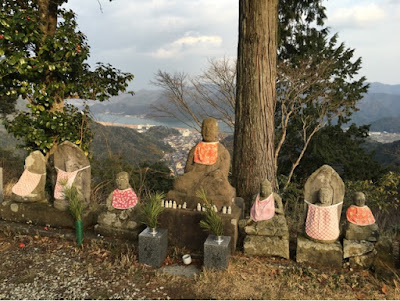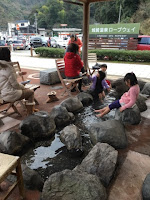We traveled to Japan with our 20 month old this summer. Here's a few things we found helpful.
You can also read more about travel in Japan.
Our trip centered around a family wedding outside of Tokyo, and our home base was in Echigo-Yuzawa in the Japanese Alps in Niigata. It's an easy Shinkansen ride into Tokyo and we made the trip a few times.
Timing
Good weather is always great to have during vacation, but all the more so when you're toting around a toddler in a stroller and their goods.
Tokyo (like a lot of the world) has gotten hotter, and unbearably so in the summer. Summer in Tokyo has always been hot and humid, but I don’t think the temperature went below 90F at night the entire time we were there, and was into 100s during day. That seems to be the new norm from mid-July to August
June into early July is the rainy season.
So spring and fall are the most comfortable times to go if you have some flexibility.
Tokyo
As we have traveled with our toddler, we have found limiting the number of hotel changes really helps with our routine and logistics. Moving two adults is easy, especially with luggage shipping in Japan, but not trivial with toddler setup in tow.
Tokyo with a few day trips sound great. I’m a huge fan of Nikko, and Kamakura is an easy day trip as well.
Within Tokyo, Odaiba has family friendly activities. teamlab Planet was fun if your kid doesn’t get too overloaded with sensory stimulation (plan to bring a carrier though, no stroller inside and you’ll need to carry at some parts, without ruining the surprise).
I did find the expat blogs, like this one, super helpful. This was their post on Odaiba with kids
Logistics
You’ll want a travel stroller. Our monster American ones won’t cut it on their narrow streets and transport. We love the Mountain Buggy. It was also was nice to have the lie-flat for changing
The city is pretty accessible, especially after the Olympics, though you might have to search for the elevator (easily pronounced as “ele be-ta-“). Here's a cheatsheet for Japanese kid-related words
I highly recommend shipping luggage from the airport to hotel and between and hotels — Google “takuhaibin” or just shipping luggage in Tokyo. It’s about $15-25 per suitcase and super easy. Hotels can arrange for you if you ask in advance, and there are a few vendors at the airport (I use ABC or Yamato)
Onsen
I love going to onsen, the hot springs and public baths, and the ryokans that have them. The bath may feel hot for children, but they can still sit with you to bath in the shower. Some rooms may have in-room baths as well. If your child is not potty-trained, just be careful with the public baths
I was excited to see this Kinosaki post on visiting my favorite onsen town with children.
Eating
Our kid is a fairly easy eater so she was ok eating out with us. Sushi restaurants are challenging because they generally don’t have anything else on the menu, but many family restaurants and izakaya have many kid-friendly options, including simple rice, miso soup, and edamame (which are all Yuna favorites).
We regularly stopped at convenience stores for snacks -- the bread and ready made section (onigiri 🍙 in particular) were favorites.
In addition to water, “mugi-cha” or barley tea, is not caffeinated and a kid favorite for drinks































